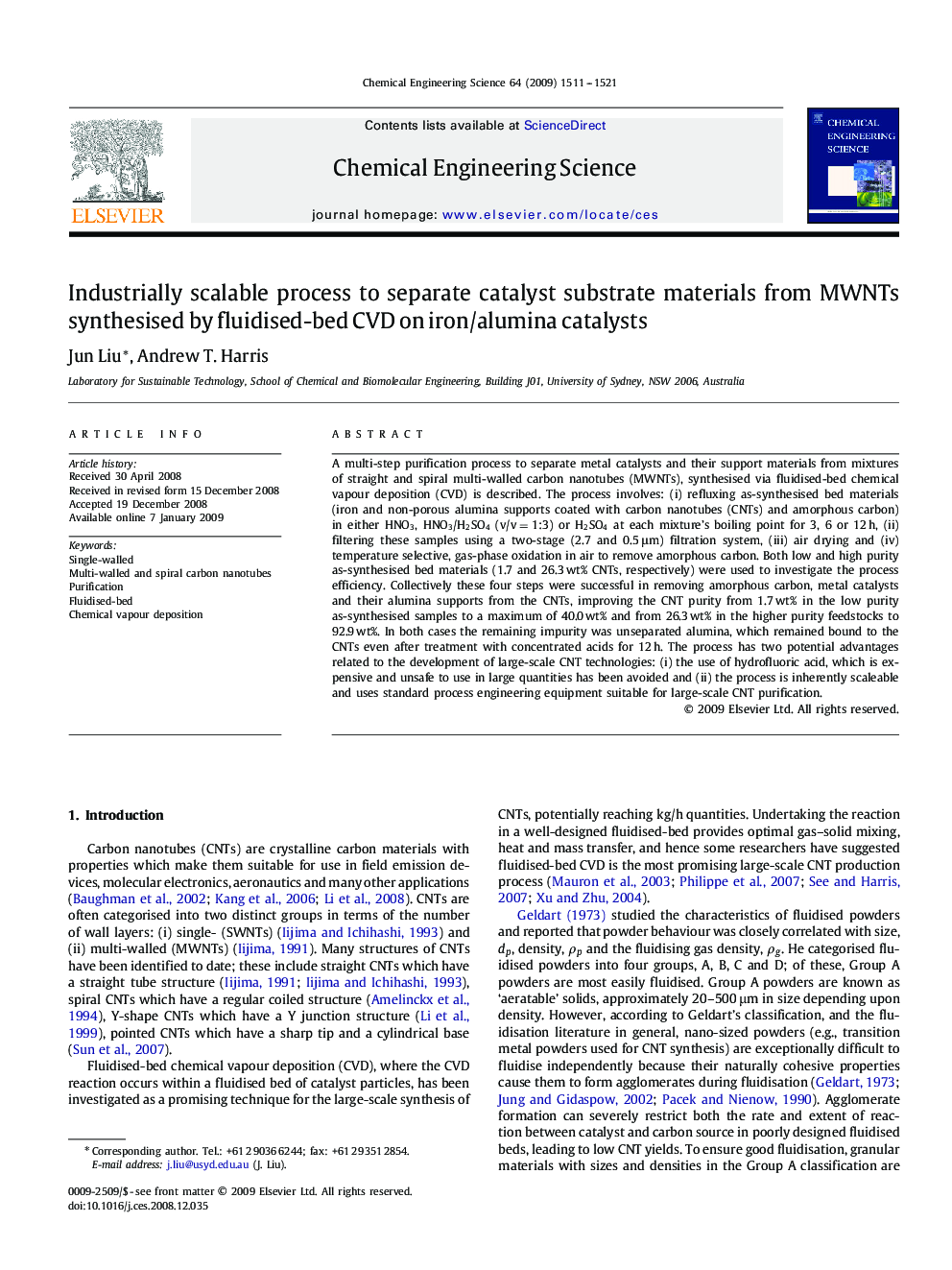| Article ID | Journal | Published Year | Pages | File Type |
|---|---|---|---|---|
| 158102 | Chemical Engineering Science | 2009 | 11 Pages |
A multi-step purification process to separate metal catalysts and their support materials from mixtures of straight and spiral multi-walled carbon nanotubes (MWNTs), synthesised via fluidised-bed chemical vapour deposition (CVD) is described. The process involves: (i) refluxing as-synthesised bed materials (iron and non-porous alumina supports coated with carbon nanotubes (CNTs) and amorphous carbon) in either HNO3, HNO3/H2SO4 (v/v=1:3) or H2SO4 at each mixture's boiling point for 3, 6 or 12 h, (ii) filtering these samples using a two-stage (2.7 and 0.5 μm) filtration system, (iii) air drying and (iv) temperature selective, gas-phase oxidation in air to remove amorphous carbon. Both low and high purity as-synthesised bed materials (1.7 and 26.3 wt% CNTs, respectively) were used to investigate the process efficiency. Collectively these four steps were successful in removing amorphous carbon, metal catalysts and their alumina supports from the CNTs, improving the CNT purity from 1.7 wt% in the low purity as-synthesised samples to a maximum of 40.0 wt% and from 26.3 wt% in the higher purity feedstocks to 92.9 wt%. In both cases the remaining impurity was unseparated alumina, which remained bound to the CNTs even after treatment with concentrated acids for 12 h. The process has two potential advantages related to the development of large-scale CNT technologies: (i) the use of hydrofluoric acid, which is expensive and unsafe to use in large quantities has been avoided and (ii) the process is inherently scaleable and uses standard process engineering equipment suitable for large-scale CNT purification.
